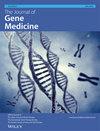Multiomics blueprint of PANoptosis in deciphering immune characteristics and prognosis stratification of glioma patients
Abstract
Background
As the most prevalent primary brain tumor in adults, glioma accounts for the majority of all central nervous system malignant tumors. The concept of PANoptosis is a relatively new, underlining the interconnection and synergy among three distinct pathways: pyroptosis, apoptosis and necroptosis.
Methods
We performed single-cell annotations of glioma cells and determined crucial signaling pathways through cell chat analysis. Using least absolute shrinkage and selection operator (LASSO) and Cox analyses, we identified a gene set with prognostic values. Our model was validated using independent external cohort. In addition, we employed single-sample gene set enrichment analysis and xCell analyses to describe the detailed profile of infiltrated immune cells and depicted the gene mutation landscape in the two groups.
Results
We identified seven distinct cell clusters in glioma samples, including oligodendrocyte precursor cells (OPCs), myeloid cells, tumor cells, oligodendrocytes, astrocytes, vascular cells and neuronal cells. We found that myeloid cells showed the highest PANoptosis activity. An intense mutual cell communication pattern between the tumor cells and OPCs and oligodendrocytes was observed. Differentially expressed genes between the high-PANoptosis and low-PANoptosis cell groups were obtained, which were enriched to actin cytoskeleton, cell adhesion molecules and gamma R-mediated phagocytosis pathways. We determined a set of five genes of prognostic significance: SAA1, SLPI, DCX, S100A8 and TNR. The prognostic differences between the two groups in the internal and external sets were found to be statistically significant. We found a marked correlation between S100A8 and activated dendritic cell, macrophage, mast cell, myeloid derived suppressor cell and Treg infiltration. Moreover, we have observed a significant increase of PTEN mutation in the high risk (HR) group of glioma patients.
Conclusions
In the present study, we have constructed a prognostic model that is based on the PANoptosis, and we have demonstrated its significant efficacy in stratifying patients with glioma. This innovative prognostic model offers novel insights into precision immune treatments that could be used to combat this disease and improve patient outcomes, thereby providing a new avenue for personalized treatment options.


 求助内容:
求助内容: 应助结果提醒方式:
应助结果提醒方式:


